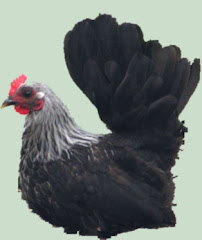The favas might be fine, but I'm going to give the garden time to dry out a bit more. This will mean more weeding, and less prettiness, but I really think it is the right thing to do - for the soil, if not for my spring pea crop.
Still, it makes me jealous, seeing those favas pop up. I want *my* favas to be popping up. I am glad there's a spring here, and it's not time to plant tomatoes yet. As much as I love the tomatoes, I'd like to honor the spring crops, too.
So what I've been doing it plotting my beds with semi-obsession, until I think I've got it just right - not too many overlapping crops from last year, enough pole beans, space for herbs and flowers. Not enough cover crops, but there's plenty of beans from nitrogen. I'll continue encouraging the clover in the paths, and sow plenty of rye in the fall before it gets too cold. (I say that now with confidence -we'll see how things go.)
My beds are laid out not quite correctly - they're slightly strange sizes, depending on how easy it is to get to them. This is my general layout.

The external path is required by the garden rules, and cheerfully ignored by pretty much every gardener. Half the trouble is that things *grow*. The rest of it, of course, is our desire to grub every spare inch of space.
I'm good about keeping the path at the bottom of the garden; to the west, I tend to create a sort of barrier of old vines and sticks - compostable stuff that will take a while to break down. This is part habitat for predators, and part laziness. There's a hill next to the plot, and I can't really see anyone voluntarily walking along that side, but them's the rules.
The internal garden path - the main one - is just wide enough to maneuver a garden cart down, to dump leaves or manure. When harvesting, I'll usually pile things on my jacket or into a bag if I'm prepared for harvest that day, and carry it out to the main paths. As I said, I try to encourage the clover. I like clover; it fixes nitrogen, it's pretty, and pollinators like it. Plus, it should help reduce erosion somewhat.
Last year, Bed 1 was favas, fennel, herbs, turnips, and onions, Bed 2 had beans and my sad corn and pea attempts, Bed 3 had tomatoes, peppers, a tomatillo, and a basil, and Bed 4 had some more tomatoes, eggplant, peppers, dead squash, dead melons, and radishes. I'm doing a partial rotation, which unfortunately leaves many of the same families proximate, but that's what happens when approximately half the garden is in the bean family and approximately half is in the tomato family. Here's the highly theoretical current layout. All the brown-red dots are poles for beans. The onions are perennial bunching onions, grown for the greens rather than the root. (The lower right corner says onions - that's a lie. That's actually basils. Have I mentioned that I'm growing lemon, cinnamon, anise, and sweet basil this year?
 Future thoughts: I'd like to have a bird-bath and seat-like thing (rock? chair? log?) in there at some point.
Future thoughts: I'd like to have a bird-bath and seat-like thing (rock? chair? log?) in there at some point.

No comments:
Post a Comment